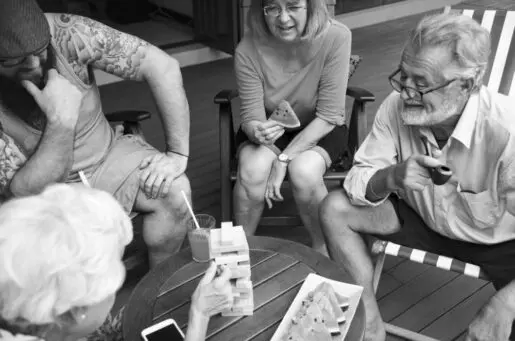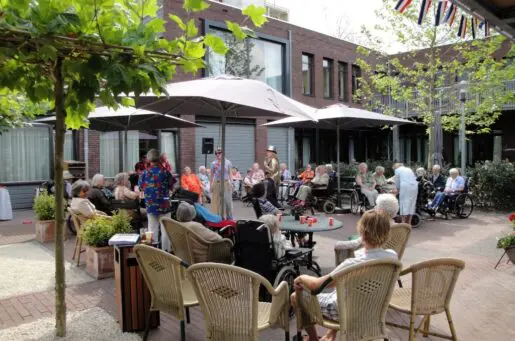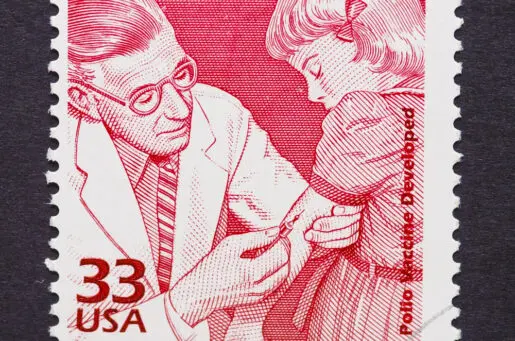Bioethics Forum Essay
He Said, “I Want to Live.” But He Refused Care
Mr. Young, in his late 60s, was admitted to a hospital in New York City with complications from untreated advanced cancer. He also had a diagnosis of paranoid schizophrenia and lived in a supportive housing facility for people with psychiatric illnesses.
The primary care team ordered a series of tests, including a CT scan to enable them to stage his cancer and develop a treatment plan. Mr. Young agreed, stating “I want to live,” but when it came time for the scan, he declined. When this pattern continued a psychiatrist evaluated Mr. Young and determined that he lacked capacity to refuse the workup. Because he had no known surrogate decision-maker or next of kin, he was classified as an unrepresented patient and unable to make his own medical decisions. As clinical ethicists we were consulted to assist in navigating decisions about his care.
Ethics Analysis and Process
We met with the primary care team—an attending physician and a resident—and began by clarifying the team’s core question: Was it ethically permissible to pursue diagnostic imaging over Mr. Young’s objection? Our role was to ensure that the process didn’t stop at his refusal but instead considered his prognosis, the likely impact of the scan, and what his behavior and history suggested about his values. The primary care team said that regardless of his cancer’s staging, his condition was probably terminal. Therefore, we thought it was unlikely that treatment over his objection could be justified. But to definitively answer their question, we wanted to talk to Mr. Young.
With the team, we asked Mr. Young about his personal history and medical preferences. Mr. Young, a frail-looking Black man, shared that he grew up in the South, had been a preacher when he was younger, and had medical trauma from involuntary psychiatric hospitalizations. When we asked him why he refused the CT scan, he said, “Sometimes I am just uncomfortable doing these things.” He was affable and friendly throughout our conversation but became visibly distressed when discussing medical procedures.
We identified several ethical concerns relevant to his care. His refusal did not appear to reflect a deeply held opposition to treatment but rather discomfort and distrust in the healthcare system. We reasoned that forcing treatment over his objection would likely be traumatizing given his history of involuntary hospitalizations. Given all of this, and that the scan was unlikely to provide much benefit, we agreed that treating him over his objection could not be justified. We recommended building trust with Mr. Young, providing emotional and psychological support to see if he would change his mind about the scan. He changed his mind after the team went above and beyond to build rapport with him.
The scan confirmed that Mr. Young’s cancer was terminal. The team had to consider a number of end-of-life issues for Mr. Young, including questions regarding his “code status” (including his wishes to be resuscitated if his heart stopped) and his discharge from the hospital, which would likely include the option of hospice enrollment.
But there was a complication. Mr. Young had a Medical Order for Life-Sustaining Treatment (MOLST) form, completed at his supportive housing facility prior to his admission to the hospital, which requested resuscitation and life-sustaining treatment. (MOLST forms are not universally considered advance directives and they require review every 90 days. Yet, there was no indication that this had been done for Mr. Young.) The team felt stuck because decision-making for outpatient discharge requires engagement the patient could not provide.
We convened a meeting with the primary care, palliative care, and oncology teams. We reasoned that there was justification for the doctors to make decisions for Mr. Young. For one thing, Mr. Young had said to the doctors at one point, in response to a treatment option presented to him, “You doctors can make the decisions.” In addition, a provision in New York State law allows an alternative decision-making process for unrepresented patients. The doctors agreed that hospice was in the patient’s best interest.
In New York State, hospice enrollment for unrepresented patients like Mr. Young requires a recommendation from the treating provider, agreement from a second practitioner not involved in his care, and review by an ethics review committee, a multidisciplinary group consisting of five members of the hospital’s bioethics community. While we arranged for the ethics review, Mr. Young’s condition rapidly declined, raising concerns about imminent cardiac arrest. If that happened, should he be resuscitated—following his wish stated in his MOLST? And, if he survived, should he be enrolled in hospice?
The primary care team presented the ethics review committee with a proposal to enroll Mr. Young in hospice and change his code status to do-not-resuscitate. The committee had an obligation to determine how much weight to attribute to his MOLST and to make a decision that best honored his wishes. While the ethics review committee leaned toward enrolling him in hospice and entering a DNR order on his behalf, they felt a profound responsibility to ensure their decision was truly aligned with the patient’s values. The committee directed the ethics service to gather additional information that could further clarify his intent.
We spoke with Mr. Young’s primary care provider, a nurse practitioner at his supportive housing facility who knew him well and was with him when he completed his MOLST. She explained that, due to his history of medical trauma from repeated involuntary psychiatric hospitalizations, he deeply feared that the hospital would abuse and kill him. For Mr. Young, the MOLST form was not just a medical directive but a safeguard, a way of ensuring that he would not be dismissed or mistreated, and that his dignity would be recognized and respected.
The Decision
We determined that Mr. Young’s wishes expressed in the MOLST had been fulfilled. He had received thoughtful and respectful care. The ethics review committee unanimously agreed that now that Mr. Young was dying, allowing him to suffer unnecessarily would feel more like abandonment than care. Continuing full interventions would not only fail to prolong his life but would risk prolonging his suffering. The committee concluded that it was appropriate for the primary care team to change Mr. Young’s code status to DNR. He was discharged from the hospital to a hospice facility, where he could receive comfort-focused care in his final days.
Lingering questions
Mr. Young’s case was exceptional in several ways. He received unusually attentive care in the hospital and had a strong outpatient support system, including an engaged primary care provider who gave critical insight into his values. Many unrepresented patients do not benefit from this level of advocacy and emotional support. Additionally, Mr. Young’s affable demeanor may have contributed to the team’s willingness to spend extra time with him—patients perceived as “difficult” might receive less consideration.
His case also highlights critical social justice concerns. Black patients and individuals with schizophrenia frequently face bias from clinicians and have historically been subjected to coercive treatment, including involuntary hospitalization and forced medical interventions. The legacy of these injustices continues to shape their healthcare experiences, as many report low levels of trust and an ongoing experience of violation in the medical system. This mistrust often leads marginalized patients to approach medical institutions with skepticism and fear. Mr. Young’s discomfort with medical procedures can be interpreted against this broader history of justified mistrust in medicine.
The structural vulnerabilities of unrepresented patients warrant further examination. It is well documented that unrepresented patients are historically undertreated, often lacking an advocate to ensure their preferences are considered. How do we ensure that ethical deliberation remains rigorous and does not default to efficiency-driven or risk-averse institutional norms? New York State’s alternative decision-making process for unrepresented patients grants significant discretion to clinicians and ethics committees, which, while flexible, risks inconsistent application across institutions. How do we safeguard against systemic disparities, particularly for patients from historically marginalized groups?
Our decision to bypass Mr. Young’s MOLST raises important ethical tensions. Mr. Young’s statements that he would prefer the doctors to make all decisions for him may not have reflected disengagement but rather an attempt to defer sole authority over an extremely distressing decision. Shared decision-making offers a way to interpret his response as an intentional, if indirect, expression of his end-of-life wishes. If we understand his approach in this way, was his MOLST form truly bypassed, or was it integrated into a different model of decision-making that better reflected his needs? How do we navigate the line between honoring documented directives and recognizing when patients, even those with limited capacity, may be engaging in shared decision-making in a way that challenges rigid procedural interpretations?
We are also aware of the risk that our decision was paternalistic. Some patients view aggressive resuscitation as central to their dignity, believing that every attempt should be made to preserve life. In contrast, our ethical reasoning prioritized his broader concerns about receiving thoughtful and respectful care, and we concluded that maintaining full code status would lead to unnecessary suffering. But was this really an apt interpretation of his wishes? Or was it only a judgment we made about his clinical best interest? Were we justified in overriding an explicit directive based on collateral information? This dilemma underscores a deeper issue: How to find the balance between honoring documented preferences and interpreting those preferences in light of contextual and relational factors? For unrepresented patients, whose voices are already structurally diminished, should their documented decisions carry more weight?
Ultimately, Mr. Young’s case invites us to consider how race, psychiatric history, and institutional bias can shape the care trajectories of unrepresented individuals and to critically examine whether clinical ethics processes, even when applied with great care, adequately account for these broader social determinants of health.
Ryan Marshall Felder, PhD, HEC-C is assistant staff bioethicist at the Cleveland Clinic’s Center for Bioethics.
Adira Hulkower, JD, MS, HEC-C, is the director of the bioethics consultation service at Montefiore Medical Center, as well as the associate director of the Montefiore Einstein Cetner for Bioethics. She is also an assistant professor of epidemiology and population health at the Albert Einstein College of Medicine.
Series Editors’ Comment: Addressing Discomfort and Distrust
When the ethics consultants meet with Mr. Young, they learn of his personal history including medical trauma and forced hospitalizations, and they observe palpable distress when he discusses medical procedures. Mr. Young’s stated wish that he “wants to live” is important when considering his goals. But with complications from advanced untreatedcancer, the clinical realities and treatment options become key to the ethical aspects of medical decisions, including considerations of treatment over objection and end-of-life care. The ethics consultation about a referral to hospice and the interpretation of the patient’s MOLST form raises new issues. The discomfort of the clinicians and ethicists in overriding the MOLST is noteworthy.
We had some questions about the MOLST. How did Mr. Young come to complete it and why? Was it completed after a substantive conversation or was it required for admission to his supportive housing facility? Did Mr. Young’s decision in the MOLST to be full code reflect his enduring values, and if so which ones? His experiences with involuntary hospitalizations and forced treatment are also important. How do clinical ethicists parse this information? We commend the ethics consult service for reaching out to a caregiver who knew Mr. Young in a different setting and was with him when he completed the MOLST. We also wonder how this case would have unfolded if there was no one who had a relationship with Mr. Young and the team was left with a duly executed MOLST but without the additional information.
There is much to learn and ponder after reading this case. It notably highlights the role that ethics consultation services can play in addressing the discomfort of patients and of clinical teams and in exploring “mixed” messages as the clinical facts change and collateral information is gathered. These actions alone cannot adequately address social determinants of health, but when Mr. Young was nearing the end of life, his situation was carefully discussed, and he was treated with respect.
— Debjani Mukherjee and Thomas Cunningham














This is a great and very much needed piece. I am an attorney and have spent my entire career representing people with psychiatric disabilities, and many of my clients, especially people of color, have truly been traumatized by coercive and unhelpful involuntary interventions. Treating the patient in the article with respect, care, and consideration probably was the single best thing that this hospital staff could do for him. Please continue to raise awareness about this crucial issue! Often “incompetence” is a deep fear of medical abd psychiatric “care” well justified by experience and not irrational. But patience and respect is truly healing.
I am a white, 70 y o male, retired chaplain and bioethics consultant who worked in a health care system covering multiple sites. I currently live in a Native American community where, for many people, end-of-life conversations clash with deeply held cultural beliefs. This can lead to difficult situations down the road. It is from this context and professional experiences that I offer my thoughts.
This well-presented case study is like several I encountered in my career. Every case study leaves out details and conversations that were part of the process. I make no assumptions about if or how the questions I raise below were addressed. My interest here is not to criticize what was a well-considered, intentioned, ethically appropriate process and decision, but to raise issues for consideration.
My reflections are centered on several quotes from the case study, admittedly taken out of context of the whole narrative. Regarding decision-making, it is unclear to me what the patient’s capacity was to make which decisions. After conversations with the patient “about his personal history and medical preferences”, the article states: “He changed his mind after the team went above and beyond to build rapport with him.” Building rapport indicates the patient’s capacity to engage the care team. This decision was respected. I wonder how the patient experienced these conversations and, given his history, to what extent he may have felt pressured by people in authority?
Later it is states: “The team felt stuck because decision-making for outpatient discharge requires engagement the patient could not provide.” The article further states: “We convened a meeting with the primary care, palliative care, and oncology teams. We reasoned that there was justification for the doctors to make decisions for Mr. Young. For one thing, Mr. Young had said to the doctors at one point, in response to a treatment option presented to him, ‘You doctors can make the decisions.’” Was the patient only referring to a particular treatment option or referring to all treatment decisions? Could this acquiescence to the doctors be sincere or a learned response to people in authority?
There seems to be a discrepancy regarding decision-making and capacity to engage the patient. What meaning do his experiences, attitudes, feelings, desires, expectations, and distrust of the medical system have for him and how does it inform his decisions?
The article states: “For Mr. Young, the MOLST form was not just a medical directive but a safeguard, a way of ensuring that he would not be dismissed or mistreated, and that his dignity would be recognized and respected.” Perhaps so and also a place where bias can enter.
“…allowing him to suffer unnecessarily would feel more like abandonment than care. Continuing full interventions would not only fail to prolong his life but would risk prolonging his suffering. The committee concluded that it was appropriate for the primary care team to change Mr. Young’s code status to DNR.” Is the above another place where bias can enter? Would Mr. Young feel “abandoned” or consider his prolonged suffering unnecessary? What does “necessary” and “unnecessary” suffering mean to any given patient? We assume most reasonable people would not choose what we might consider “unnecessary” suffering. Does this assumption apply to every patient? Does it justify not engaging a patient because they lack the capacity to make a decision that is considered reasonable?
The committee’s decision seems to logically follow a “harm/suffering” conceptual framework. From the perspectives of the primary care team and the ethics review committee, the burden of resuscitation outweighed the benefit. Assuming the patient was capable of this level of reflection, was the deep, existential meaning of the patient’s distrust of the medical system explored? Since the patient was a “preacher,” were chaplain services utilized to explore how his theological beliefs inform the meaning of suffering and harm as it relates to his life experiences?
The meaning of harm and suffering can vary from one patient to another. The suffering associated with physical and psychological pain can be less harmful than other deeply held spiritual, cultural, or individual beliefs. In this case, what would cause the most harm to him, the suffering associated with resuscitation or the harm of having his stated wishes (in the MOLST) not followed? Finally, was the patient informed of the decision to “change Mr. Young’s code status to DNR”? If so, what process was used and what outcome occurred? If not, does it justify his distrust?
All cases such as these require judgements be made on the best available information and with a sincere desire to avoid harm and respect the patient’s autonomy and dignity. Often the window of opportunity to make decisions is short. There are almost always lingering questions and room to evaluate and improve a process. The challenge is to enter the deep waters of how a patient interprets their experiences and constructs meaning for their lives. Many people are reluctant to speak openly about these issues and might need help articulating their deepest beliefs. This is especially true for patients who distrust a “system” or distrust people who might represent the power structures that previously harmed /oppressed them.
Michael,
We are so grateful for your extensive and careful consideration of our case study. You’ve identified a number of important points, all of which deserve a response. We hope you’ll forgive us for being somewhat selective and focusing on two.
The first concerns your question about what we mean by “building rapport” with the patient. You ask whether what appeared to be rapport-building was in fact a kind of pressure to conform to authority. We were not present in the moments when the patient changed his mind, so we will never know exactly what transpired. However, we can share that the pivotal moment came when the (young, female, Asian) resident physician demonstrated her commitment to his safety by holding his hand as the stretcher was wheeled to the CT scan. In the medical setting, it is simply a fact that patients often make decisions on the basis of their physician’s recommendations. Indeed, it would be unethical for a physician to refuse to “influence” a patient by declining to make a recommendation. The relevant question is not whether a physician has ‘influenced” a patient, but whether the physician’s process of making a recommendation is ethically justifiable. In this case, we believe it was. While physicians can, of course, lean too heavily on authority, we see this team’s approach not as coercive but as an extraordinary effort to adopt a caring perspective and earn the patient’s assent.
The second point is your concern about the “bias” implicit in our judgment that the underlying aims of the patient’s MOLST had been satisfied by the attentive care he received in the hospital. This connects to your related comment that there may be bias in our suggestion that he might have experienced “unnecessary suffering” had he remained full code. We acknowledge the ambiguity here and recognize that some patients prioritize quantity over quality of life. In this case, however, we found no evidence that his wishes reflected such a priority. On the contrary, we had better evidence suggesting the opposite. Of course, we could have been wrong, but we believe it was appropriate for the ethics review committee to exercise clinical judgment and give some weight to accepted medical standards. An interesting question, and one we can only speculate about, is whether our decision would have been different had he continued to respond to goals-of-care discussions with a consistent request for full code and active treatment.
~Ryan and Adira
The many cases surrounding bioethics encompasses both complex and uniquely challenging situations that require care teams to think outside the normal realm of decision making and instead approach these scenarios through a thoughtful yet objective approach in order to best serve the patient. Not only does this work to ensure that the patient’s needs are properly assessed and advocated for, but I also feel strongly that the inclusion of an ethics team in these patient care decisions works to reestablish trust within our healthcare system.
It remains of utmost importance that hospitals utilize ethicists when working through these challenging scenarios. To that point, through the initial engagement of your team in Mr. Young’s care, I believe your recommendation of the medical team to work to establish a better, more trusting rapport with the patient made quite the difference. Given his background of distrust in the medical system as a result of his treatment during previous psychiatric hospitalizations, it made sense why he declined the ordered scans previously. That being said, when patients refuse treatment that may not align with what the team is suggesting, I believe it is of utmost importance for the medical team to think about the situation beyond just the patient’s refusal. Instead, looking to have more of an understanding surrounding what ultimately led the patient to make that decision. Is it a lack of understanding of the underlying necessity? Could it be fear of more added costs? Or is this a sign of fear that could have been induced by previous bad experiences, such as in Mr.Young’s case. Luckily, through the implementation of onboarding an ethics team, the patient was able to eventually establish that trusting relationship which may not have happened without the involvement and suggestions of your team.
I believe you also made a significant yet saddening point in highlighting that this patient had an engaged care team that sought to find the best solution for the patient when that might not always be the case. As you mentioned, if the patient was perceived as a “difficult” individual, the medical team may simply have moved on to the next case and documented the patient’s refusal of the intervention without any followup. This type of negligent oversight leads to further distrust of the healthcare system, particularly for vulnerable populations. It is our duty as providers to establish a trusting and open relationship with each and everyone of our patients, regardless if one perceives them as behaviorally “challenging.” It is a unique privilege to be in the position of possessing both the knowledge and the skills to diagnose and treat patients, but this is something that is often not valued enough. We have the responsibility to ensure our patients receive the best possible care we can offer to them– this includes remaining inquisitive in these pivotal moments, while also demonstrating understanding when they wish to approach their treatment plan in a different way than what we may view as the “right” course of action.
When it came down to eventually determining the best treatment option for this patient, I truly can only imagine the difficulty that came along with it. That said, it’s also hard to combat the idea that sometimes there is no “correct” way of doing things and instead decisions have to be made based on the patient’s perceived values along with medical expertise. On one hand, the patient had voiced his severe discomfort and distrust with the healthcare system, leading him to obtain a document highlighting his wishes of continued care/life sustaining measures. From this, one could infer that the patient took measures to ensure his autonomy was respected in the event he was unable to contribute to the conversation directly. However, one might also consider that the patient may not have known how complex his diagnosis would become nor understood the overall severity of his case that would have led to interventions that could have induced more harm. On the other hand, the patient had a poor prognosis and continuing his hospital course with the addition of life sustaining treatment and other intensive efforts would likely result in increased overall suffering– also at the hands of medicine. This type of physical suffering, when looked at from an ethical standpoint, could also contribute to further distrust of the healthcare system when likely the main goal of the providers is to help alleviate that pain and suffering whenever possible.
As I previously mentioned, coming to the overall decision in this case must have presented many ethical challenges.
However, I firmly believe that you and the medical team worked to ensure that all pertinent information was taken into account and that the patient’s wishes were most accurately represented in the final decision which allowed him to pass peacefully.